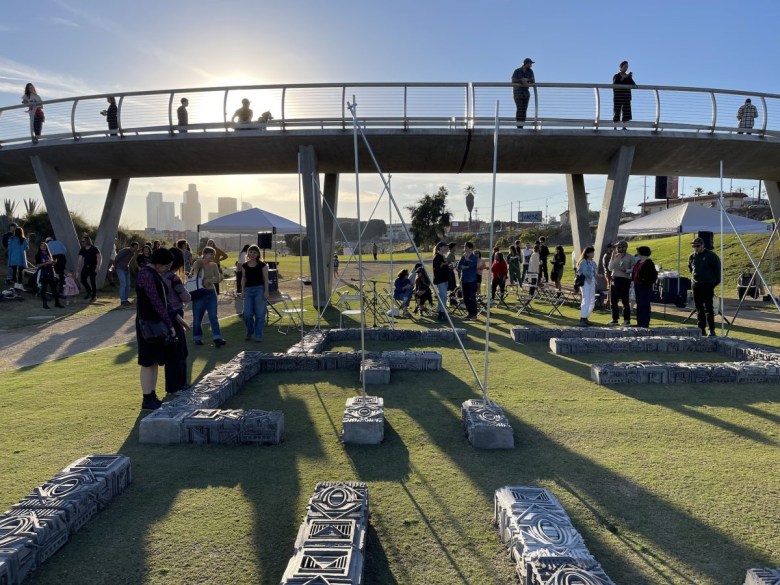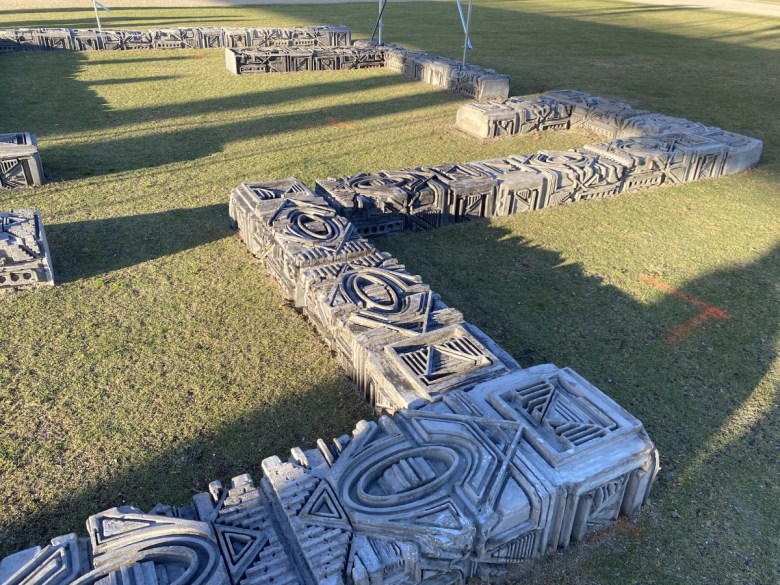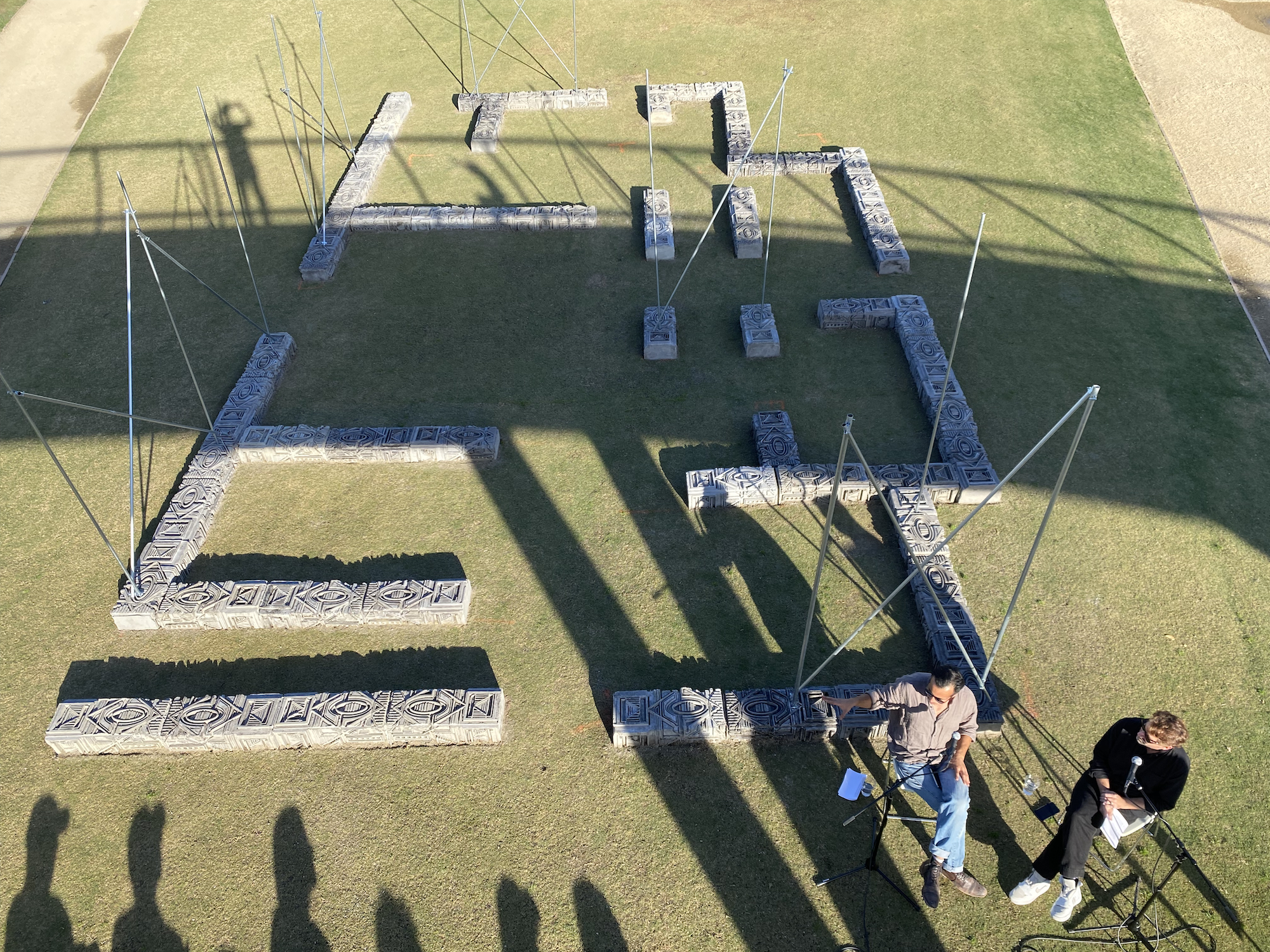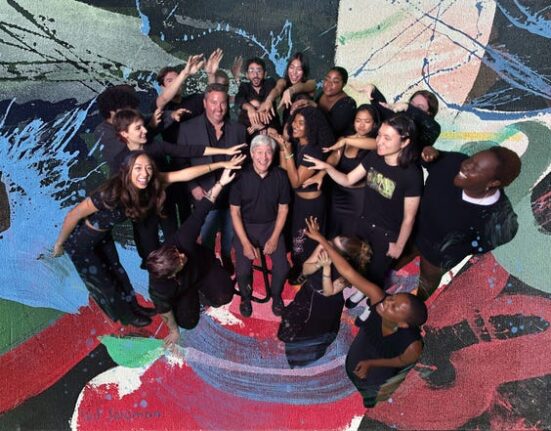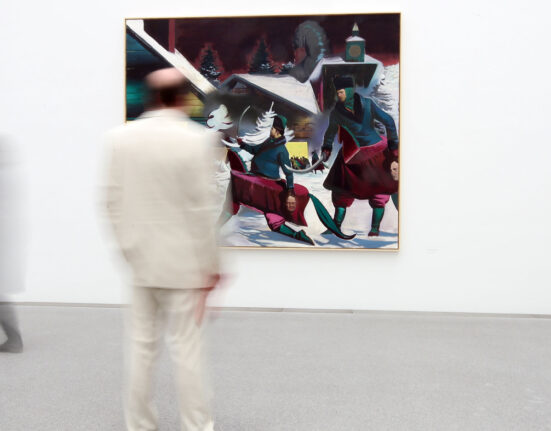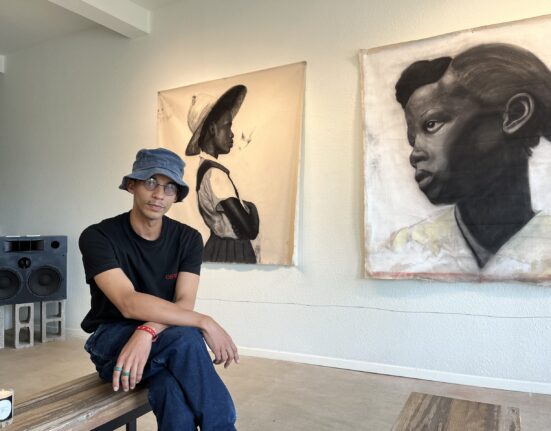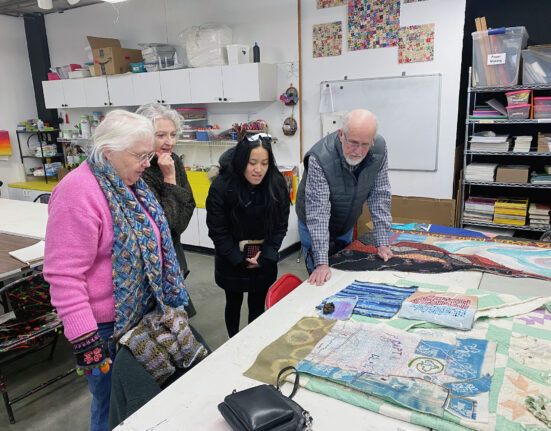LOS ANGELES — On Saturday afternoon, a crowd gathered at Los Angeles State Historic Park on the edge of Chinatown for the opening of Rodrigo Valenzuela’s new public artwork, commissioned by the local nonprofit Clockshop. Titled “The Underpinning,” the work consists of about 75 large concrete blocks laid out in rows on the grass, resembling the foundations of a newly discovered ancient ruin. The artist adjusted metal poles extending up from the blocks like temporary walls while visitors meandered through its suggested rooms and children scampered over its low ramparts, undeterred by a “No Climbing” sign nearby.
“I call it a sculpture, a drawing, a performance site. It’s many things,” Valenzuela told Hyperallergic. “Ultimately it’s a diagram of the house I grew up in.”
From these very specific and personal origins, “The Underpinning” pulls back, engaging with larger issues like the dreams and realities of 20th-century modernism and its signature material, concrete, as well as with possible alternatives to better serve the public.
Valenzuela grew up in government housing in Santiago, Chile. The work recalls the modest floor plan of his family’s apartment while also referencing the William Mead Homes, a low-income development built in the 1940s blocks from the LA State Historic Park. He contrasts the aspiration of affordable housing for all with the challenges of bringing that dream to fruition. His use of concrete reflects a dichotomy as well: the medium that represented the hopes of a new, modern world that sought to rid itself of the constraints of traditional hierarchies and the subsequent failures as radical egalitarianism was replaced by totalitarianism and repression.
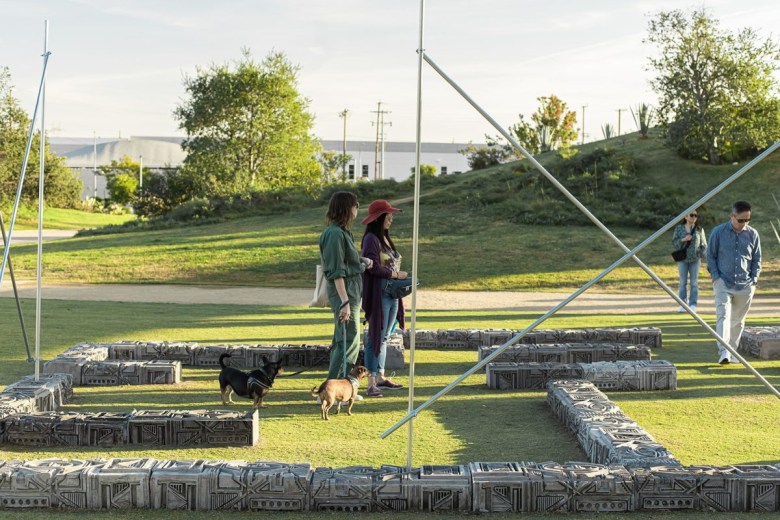
“Concrete is an oppressive material, the material of bureaucracy, imperialism, brutalism,” he said, noting its use in several Latin American countries with US-backed dictatorships in the 20th century. “You cannot divorce this modernism from imperialism, from US foreign policy. All these thoughts are in those bricks.”
On the surface of these cast-concrete blocks are bas-relief geometric patterns that recall Mesoamerican designs with a futuristic, sci-fi edge to them. Valenzuela is somewhat cagey about their inspiration, suggesting a pan-Indigeneity rather than a specific source; however, he said they are reworkings of the shapes that first appeared in his Animitas series from 2016, photographs of sculptural forms inspired by roadside altars in Latin America — “monuments for unknown people,” as he describes them.
They also speak to the modernist trope of “borrowing” from non-Western sources, disconnecting them from their original context. Most notably, they reference the Mayan Revival style of Frank Lloyd Wright’s Ennis House (1924–26), which was inspired by the Maya ruins at Uxmal.
“The symbology is intentionally undressing histories of futurism and indigenism, which are coeval with the rise of fascism and the co-option of exoticized people,” said architect and historian Manuel Shvartzberg Carrió, in conversation with the artist on Saturday, December 9. “The weight of the blocks conspires against the facile levity with which craft has been a vehicle for co-optation,” he added of Valenzuela’s concrete forms, which weigh about 300 pounds each. Before becoming a fine artist, he worked for years in construction, and applied this skill set to create “The Underpinning,” laying out all the blocks by hand with the help of an assistant.
From ancient and modern history, Carrió shifts to focus on the work’s resonance with the present and future, which it suggests rather than dictates.
“What would public housing that is actually representative for people and by people look like? Whose histories and needs are being represented and met with public housing?” he said. “That’s where challenges are today.”
